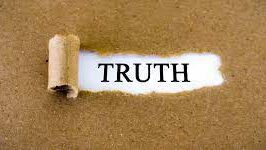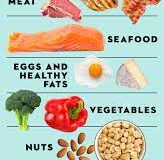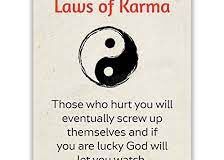LeBron Deal With Reebok
THERE WAS A reason Reebok was selected to make the first presentation to LeBron James: They had the most ground to make up. Earlier in that year, 2003, Reebok had made Kobe Bryant a huge offer reportedly worth up to $15 million per season. Bryant had paid $8 million to buy himself out of his Adidas deal some months before. As a three-time champion already, Kobe was a major shoe free agent himself and spent the season wearing different brands. But Bryant’s talks with Reebok broke down and he ended up focusing on Nike. Aaron Goodwin, who won the agent race to land LeBron as a client in part because he had a history of doing big shoe deals, designed a strategy to create a bidding war. He hoped Reebok, which was clearly eager to get another star after missing out on Bryant, would set the market. Goodwin had made it clear in speaking with Reebok officials: that LeBron expected a huge offer for them to be taken seriously.
They did. In their meeting with LeBron and his mother, Gloria, Reebok offered a groundbreaking package worth $100 million including a $10 million signing bonus. For the first time, LeBron was starting to realize he might have a future that didn’t include Nike or Adidas, the brands in which he’d been envisioning himself for years.
Adidas executive Sonny Vaccaro had hinted to LeBron his company was going to offer $100 million guaranteed, 10 years at $10 million per year. A magical and a stunning number, even years later it stands as a benchmark that is hard to fathom. But the scenario of three companies all in the bidding for an asset that each badly wanted had created a situation in which LeBron was going to be able to leverage a historic deal.
For his part, Vaccaro had been preparing for this move for months and had spoken to the highest levels of the company to make sure everything was set for his pitch. Significant money had been invested in the weekend meeting. Adidas sent a private jet for LeBron and several of his friends on a Friday, just two days after he’d returned from Reebok. After the party landed, they provided courtside seats for a Lakers playoff game that night. The home team won, beating the San Antonio Spurs, and Kobe had 39 points wearing Jordans. The next day, there was a presentation at a Malibu mansion that overlooked the Pacific Ocean that the company had rented.
All the trappings were there. The slick presentation, the shoe mock-ups, and marketing concepts. But the game had been changed with that meeting at Reebok, just as Reebok hoped, and when the bottom line arrived there was a problem. The $100 million wasn’t there.
In the final paperwork from Adidas headquarters in Germany, the company had balked and offered significantly less guaranteed. There were incentives and royalty offerings that could have made it more than $100 million under certain circumstances, but the guarantee was for less than $60 million. Before Reebok, this would have been an awesome offer. After Reebok it didn’t measure up. Everyone knew it. The air went out of the room.
Vaccaro personally apologized to LeBron and his mother. He was crestfallen and demoralized not just because he knew he wasn’t going to land LeBron but because he’d looked bad in the process, his bosses didn’t back him up. He decided that day he was going to leave Adidas.
Within two months he resigned. LeBron flew home thinking about Reebok and that $100 million.
The following Friday there was another private jet scheduled to come to Akron to get LeBron and family, this one belonging to Nike. It had been important for Nike to go last, they’d wanted it that way so that they could have a better control of the talks. But there are downsides to that strategy, especially because Nike had a certain way of doing business. They didn’t like getting into bidding wars. Frequently they signed athletes for less than the competition was offering because of their superior product, branding, and marketing. Athletes wanted to be affiliated with Nike. Just a week before LeBron was due to come to town, Carmelo Anthony was on campus in Beaverton and his presentation, negotiation, and agreement to join Nike was wrapped up in one day.
LeBron and his mom once again headed out to hear a pitch. Maverick Carter joined them, going back to Nike’s campus. It was at the Mia Hamm Building, a sleek new structure with tinted green windows that was the largest on the campus. Certain staples went into these things: special lighting, videos, products artfully displayed. But this one was the grandest Nike had done. It was put together by Wieden+Kennedy, the Portland creative agency that had designed most of Nike’s great marketing efforts over the years. A poet was hired to read a work created for LeBron. There were examples of what his shoes could look like, what shirts and shorts and socks would be in his clothing line. One of the themes was LeBron as a lion, following the King James moniker he’d come to like.
Then came time to talk. Normally, in these moments the agents would go into a conference room and the player would leave as the actual numbers and terms were presented. But things started to go off script here.
LeBron wanted to be there when the offer was actually made, which Nike wasn’t prepared for. And he wanted Gloria to be there as well. After all, Reebok had them in the room when they made their offer and Reebok pulled out a $10 million check. LeBron, it seemed, was hoping for something just as grand.
That wasn’t how Nike did business. Phil Knight had come to the presentation, and after his executives came to him with the issue, he said it was fine that LeBron and Gloria came into the conference room. This offer didn’t draw any tears of joyful surprise out of the Jameses as Reebok’s had a week earlier. It was for closer to $70 million guaranteed.
As for the signing bonus, well, Nike had gotten word of the $10 million offer and they were prepared to do the same … sort of. They were not planning to have to tell this to LeBron directly, but the offer was for a $5 million bonus when he signed and then an additional $5 million as part of his paycheck later, once the long-form version of the deal was assembled. And there was no check on the table ready to be endorsed and taken to the bank as there had been at Reebok. Gloria didn’t cry at that offer. All of the momentum that had built up during the presentation dissipated in a matter of moments.
To frame this offer, Tiger Woods‘ first deal at Nike was for $35 million. Bryant ended up agreeing to a $40 million deal with Nike that same year. What Nike put on the table was extremely impressive, just not as impressive as Reebok’s offer. Further talks between the sides didn’t go well.
That night, LeBron went to Nike executive Lynn Merritt’s house. Everyone knew things had gotten bleak. Merritt had a sinking feeling this would be his last meaningful time with LeBron. They ended up having a bit of a bonding session. LeBron befriended Merritt’s teenage son, and they played video games together. Still, when Merritt saw LeBron off at the airport on Sunday, he didn’t feel good about Nike’s prospects.
Goodwin wanted to make a deal by the following Wednesday. The NBA’s draft lottery was to be held that Thursday in New Jersey, the night LeBron would find out what team he’d be playing for the following season. It was possible LeBron could have gone to the New York Knicks, a huge market, or to the Memphis Grizzlies, one of the smallest markets. Goodwin didn’t want market size to play into the bidding, and by setting this deadline, it encouraged the companies to make their best offers.
On Monday morning, employees at Nike came back to work expecting to get news that LeBron had agreed to sign over the weekend. More than one hundred employees played a role in the presentation, and some were eager to hear that they would be celebrating a win. Instead, when they stopped by the John McEnroe Building, where the marketing executive offices were, they found out the truth. As the finance guys said, “The delta between us and Reebok is significant.”
In other words, Nike was getting outbid, and it was getting worse. The door obviously wasn’t shut, but the sides were stuck. Nike was ready to raise its offer, but it wanted Goodwin to make a counter first. Goodwin didn’t want to counter. This little game dragged on for twenty-four hours with Merritt finally getting Goodwin to come off his position and make a counter, but they were still a long way from agreement.
Meanwhile, Goodwin remained in contact with Reebok, who smelled the chance to close. They increased their offer, eventually boosting it to more than $100 million. By the time the signing bonus and other factors were included, Reebok’s offer to LeBron was around $115 million, according to those who were familiar with the final numbers … staggering. On that Tuesday, Reebok and Goodwin got close enough that plans were made for all the parties to fly to LeBron’s hometown of Akron to try to formalize the contract. Reebok was going to make this happen. If they didn’t think so, they wouldn’t have sent executives and lawyers to Akron with paperwork.
But LeBron had something else on his mind. He knew the numbers. He’d been sitting with the reality that he might be going with Reebok for a couple of weeks at that point. But he didn’t want to do it. He didn’t like their shoes that much. A couple of years earlier, one of Reebok’s endorsers, Shawn Kemp, had said the shoes Reebok gave him failed during games, calling them “throwaways” in an interview with a newspaper reporter. Reebok sued Kemp for saying it, but he said it just the same. LeBron had always envisioned himself wearing Nike and wanted to be a part of their great ad campaigns and work with their designers.
Yet Reebok’s offer was tens of millions more. That money was there to make LeBron forget about his hesitations. Nike certainly could have afforded to match the Reebok offer; it would have made little difference in their bottom line. But they had to do many more endorsement deals with many other athletes. They had to factor in holding that line to a degree. But when LeBron imagined his future, he’d always seen himself in Nikes. He’d dreamed of being in Nike commercials. He wanted to be like Jordan. He wanted to do business with Nike. In his words, he wanted to be in the Nike family. Some of it was Jordan’s legacy. Some of it was superior branding. Some of it was ego: He wanted to wear the swoosh. Some of it was Merritt, who had been able to win LeBron’s trust.
It was Wednesday. Reebok was in town, camping out in one room at the hotel ready to finish the deal. In another room in the hotel, Goodwin called Nike back and more or less made it known that LeBron wanted to sign with them. If they improved their offer and agreed on a few points, they could get him. Nike executives went into a frenzy, realizing they were back in the game. Knight was in New York at a funeral for Mark McCormack, the legendary sports agent, and got on the phone. He authorized an increased offer. As the Reebok executives waited, their counterparts at Nike put together a term sheet as evening approached. As they tried to finish, Knight was about to board his plane in New York to fly to his home in Palm Springs; he’d be out of touch for six hours.
After all that, LeBron agreed to a seven-year, $77 million guaranteed contract with Nike plus a $10 million signing bonus that would get the deal to $87 million. The Nike executives faxed the term sheet and said LeBron had to get it back as fast as possible. They waited by the fax machine, pacing, for the paper to come back with LeBron’s signature. LeBron came to the hotel and didn’t go to see the Reebok guys; instead, he went to Goodwin and signed one of the most important documents in his life.
Goodwin went down the hall to give the Reebok executives the news. They were furious about it all: Being used for leverage. Flying all the way in only to be left at the altar. Not being given a last chance to try to sweeten the deal. There were hard feelings all around.
Over the long haul, LeBron ended up making significantly more on that deal once his royalties kicked in, pushing his earnings to over $100 million in that span. When the news went public — several outlets reported the deal as worth $90 million — it got massive attention in the basketball media, of course, but also on 24-hour news shows and national newspapers. The number was so eye-popping, it became a cultural story. There was commentary on news shows and columns in editorial pages and the like. There was also reaction among NBA players. LeBron had just become the most highly paid shoe pitchman other than Jordan. He more than doubled Bryant’s new deal, and Bryant was one of the faces of the league.
The following day, Reebok’s stock dipped. It had leaked that week that they’d had the highest bid and there was some momentum that they’d win. The company felt the need to make a statement. It read: “While we believe LeBron James would have been a tremendous asset to Reebok, the costs associated with securing a long-term partnership with him was far beyond what we are willing to invest. Reebok’s largest competitor simply put more money on the table and in the final hour — after carefully considering what is in the best interest of our business and our shareholders — Reebok elected to not match this offer … we feel great with what Reebok has achieved and that our recent string of unparalleled successes pressured our largest competitor into taking on this enormous cost.”
This was extraordinary. A multinational corporation having to put out a statement about not signing a teenager to an endorsement contract. It was also not true: Reebok had offered more money. When they saw the news reports of the deal being worth $90 million, even if they weren’t exactly accurate, the Reebok officials knew. They tweaked Nike anyway.
From ESPN.com

















